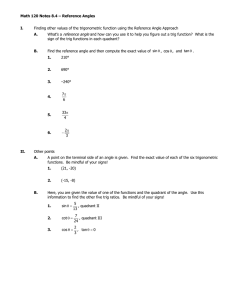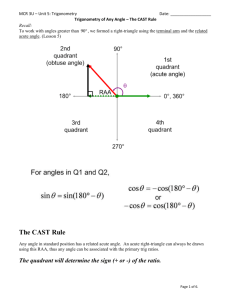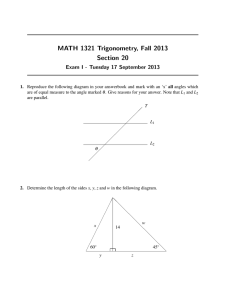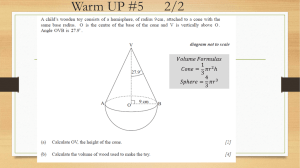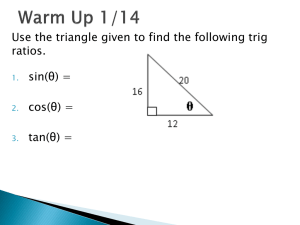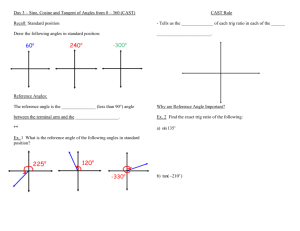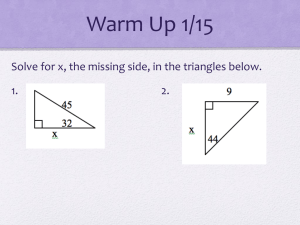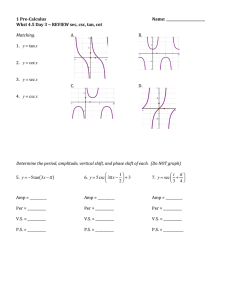Notes - 7.2 (4e) - Panitz
advertisement
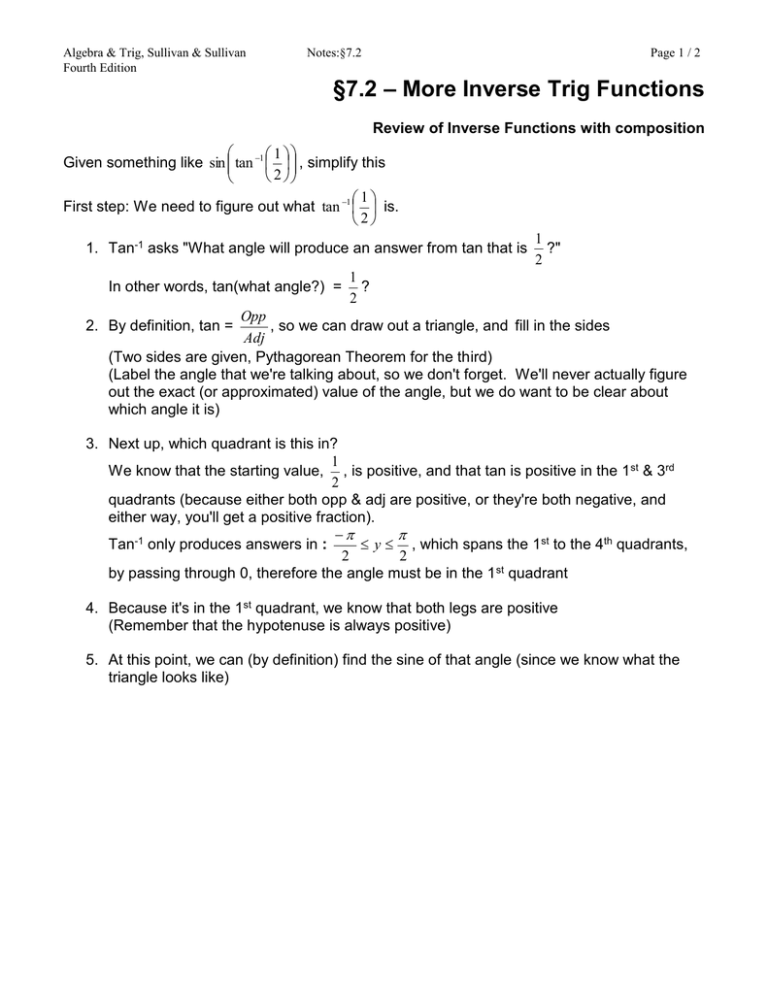
Algebra & Trig, Sullivan & Sullivan Fourth Edition Notes:§7.2 Page 1 / 2 §7.2 – More Inverse Trig Functions Review of Inverse Functions with composition 1 Given something like sin tan 1 , simplify this 2 1 First step: We need to figure out what tan 1 is. 2 1. Tan-1 asks "What angle will produce an answer from tan that is In other words, tan(what angle?) = 1 ?" 2 1 ? 2 Opp , so we can draw out a triangle, and fill in the sides Adj (Two sides are given, Pythagorean Theorem for the third) (Label the angle that we're talking about, so we don't forget. We'll never actually figure out the exact (or approximated) value of the angle, but we do want to be clear about which angle it is) 2. By definition, tan = 3. Next up, which quadrant is this in? 1 We know that the starting value, , is positive, and that tan is positive in the 1 st & 3rd 2 quadrants (because either both opp & adj are positive, or they're both negative, and either way, you'll get a positive fraction). y , which spans the 1st to the 4th quadrants, Tan-1 only produces answers in : 2 2 by passing through 0, therefore the angle must be in the 1 st quadrant 4. Because it's in the 1st quadrant, we know that both legs are positive (Remember that the hypotenuse is always positive) 5. At this point, we can (by definition) find the sine of that angle (since we know what the triangle looks like) Algebra & Trig, Sullivan & Sullivan Fourth Edition Notes:§7.2 Page 2 / 2 Inverse Of Remaining Trig Functions Just like we did with the first three trig functions, we can find inverses of the reciprocal trig functions: It's important to remember that they keep the same angle restrictions as their reciprocals ((co)sine/tan) have, but based on their graphs, have different restrictions on x (the inverse's domain) y sec 1 x means x sec y where Domain: x 1 Range: 0 y y 2 2 y y cot 1 ( x) means x cot y where Domain: -∞ ≤ x ≤ ∞ Range: 2 2 y csc 1 ( x) means x csc y where Domain: x 1 Range: Evaluating the Inverse Of Remaining Trig Functions Pretty much the same routine as we through above, except that since we're looking at the reciprocal of something, we have to make sure that we get the sides right Example: Find csc 1 2 hyp 1. Csc = , so draw the triangle based on that. opp 2 (Remember that 2 can be written as ) 1 2. Figure out, based on where sin/csc is positive/negative, and the range of csc, which quadrant the angle must be in (In this case, the 1st, since 2 is positive, and sin/csc is restricted to the 1 st and 4th quadrants) 3. At this point, it should be one of the special triangles, so figure out which angle it is. For angles other than 30-45-60-90-etc, we'll use our calculator to get an approximate answer (Also mention that we can now do composition with these)
